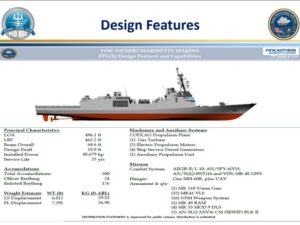
Construction of the first new Constellation-class guided missile frigate, FFG-62, is set to start later this year, the Navy’s program manager said last week. Shipbuilder Fincantieri Marinette Marine plans to start lead ship fabrication in late summer or early fall 2021, after it completes detail design which covers the critical design review and production readiness review, Capt. Kevin Smith, program manager of the Constellation-class frigate (PMS 515), said during the virtual Surface Navy Association symposium on Jan. 12. “After we…

 By
By 











